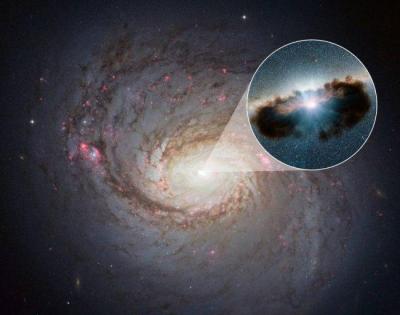
When it comes to understanding our universe, everything we study needs to be considered in context. This means that when we’re trying to understand the emissions from various sources, we also have to account for other sources changing those emissions along the way. This recently became particularly important for researchers trying to understand how it is that the IceCube Neutrino Observatory keeps observing an unexpectedly large flux of high energy neutrinos with none of the corresponding gamma rays that we expect to see associated with them.
According to team lead Kohta Murase, high-energy cosmic neutrinos are created by energetic cosmic-ray accelerators in the universe, which may be extreme astrophysical objects such as black holes and neutron stars. They must be accompanied by gamma rays or electromagnetic waves at lower energies and sometimes even gravitational waves. So we expect the levels of these various ‘cosmic messengers’ that we observe to be related.
Interestingly, the IceCube data have indicated an excess emission of neutrinos with energies below 100 teraelectronvolts (TeV), compared to the level of corresponding high-energy gamma rays seen by the Fermi Gamma-ray Space Telescope. This kind of “what the?” moment implies we either don’t fully understand the origins of high-energy neutrinos, or there is something else involved.
Neutrinos readily pass through materials, while gamma rays can be absorbed by gas, dust, and other intervening material. So what is eating the gamma rays? In a new paper in Physical Review Letters, this research team describes how the environment around supermassive black holes can both generate the high-energy neutrinos and gamma rays and then absorb the gamma rays into the surrounding accretion disk. Active galactic nuclei – feeding central black holes in galaxies – can both produce the needed particles and have the needed absorbing material, neatly explaining a whole lot of previously confusing data.
More Information
Penn State Eberly College of Science press release
“Hidden Cores of Active Galactic Nuclei as the Origin of Medium-Energy Neutrinos: Critical Tests with the MeV Gamma-Ray Connection,” Kohta Murase, Shigeo S. Kimura & Peter Mészáros, 2020 June 30, Physical Review Letters (Preprint on arxiv.org)




 Join the Crew!
Join the Crew!
 Escape Velocity Space News
Escape Velocity Space News
0 Comments